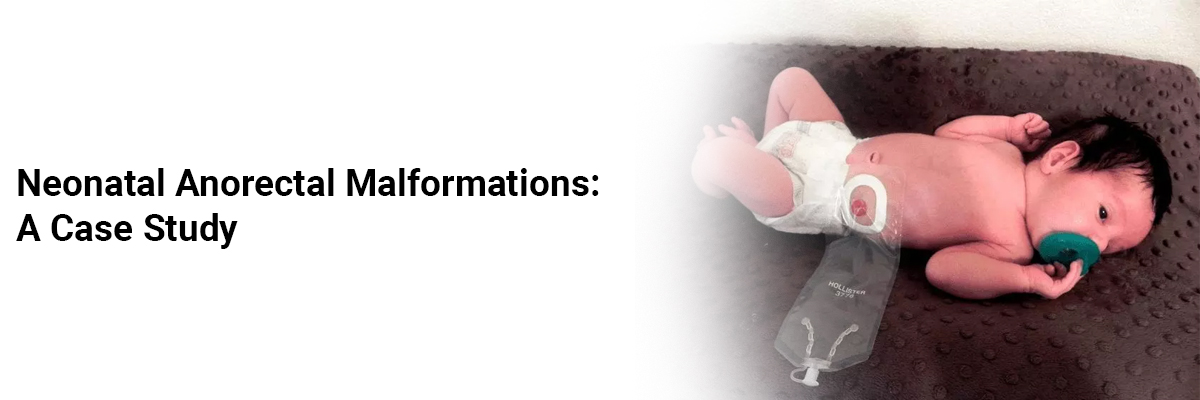
 IJCP Editorial Team
IJCP Editorial Team
Neonatal Anorectal Malformations: A Case Study
A male neonate exhibited typical buttocks, normal genitalia, and a well-formed perineum with a funnel-shaped anus upon birth.
He was delivered at 40 weeks gestational age with a birth weight of 3,820 grams (Z-score 0.7, 75th percentile). Prenatal assessments revealed no abnormalities.
On routine examination, attempts to pass a small anal probe were unsuccessful.
A nasogastric tube and central venous catheter were inserted, and clinical monitoring commenced. Oral intake was withheld for 24 hours to await the passage of meconium. A series of tests to rule out associated malformations yielded normal results.
At 16 hours of age, the neonate presented with significant abdominal distension and exhibited no passage of meconium or meconuria. A lump was observed during a Valsalva maneuver at the posterior aspect of the anal dimple.
A cross-table lateral X-ray revealed a 5-millimeter gap between the rectal cul de sac and the skin.
On the second day of life, a mini-primary posterior sagittal anorectoplasty (PSARP) was performed, disclosing the rectal pouch, external to the sphincter muscle – indicative of anorectal malformation (ARM) without a fistula.
Postoperatively, the neonate's recovery was uncomplicated, with meconium passage on the first-day post-surgery and initiation of oral feeding by the third day. Discharge was granted on the fifth postoperative day, with anal calibrations scheduled for three weeks later.
Meticulous examination, including anal probing, is warranted, particularly in cases with a seemingly normal perineum. In this case, the inability to insert a rectal tube aided the diagnosis. Early identification of ARM-based on the Krickenbeck classification allows for a thorough preoperative evaluation––as outlined in the 2015 European consensus meeting of ARM-Net members––facilitating standardized surgical interventions.
Pediatricians and neonatologists in all medical facilities should incorporate this practice to mitigate potential complications and improve patient outcomes.
Source:Paradiso FV, Silvaroli S, Rizzo R, Nanni L. Case Rep Pediatr. 2023 Oct 31;2023.

IJCP Editorial Team
Comprising seasoned professionals and experts from the medical field, the IJCP editorial team is dedicated to delivering timely and accurate content and thriving to provide attention-grabbing information for the readers. What sets them apart are their diverse expertise, spanning academia, research, and clinical practice, and their dedication to upholding the highest standards of quality and integrity. With a wealth of experience and a commitment to excellence, the IJCP editorial team strives to provide valuable perspectives, the latest trends, and in-depth analyses across various medical domains, all in a way that keeps you interested and engaged.




















Please login to comment on this article